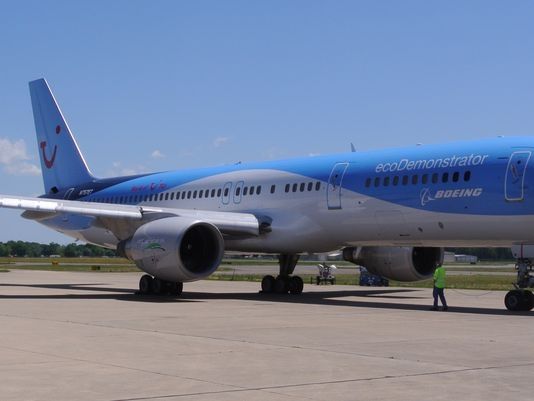Area 5150
Model citizen, Zero discipline

Trials began Wednesday at Shreveport Regional Airport for a research project being conducted by NASA Research in Langley and Boeing.
A Boeing 757, along with 100 project members including engineers, materials experts and a entomologist, landed in Shreveport Monday and will be conducting research at the airport for the following three weeks.
The project, called the Insect Accretion Mitigation, is testing several compounds to use on commercial airplane wings designed to decrease the drag associated with the accumulation of bug splatter, allowing a more efficient use of jet fuel.
Tests also arebeing conducted on the alternate wing of the airplane, but project members wouldn't disclose the nature of those experiments.
Mark Crawford, spokesperson for Shreveport Regional, said the airport was selected for the experiment from more than 90 site candidates because it met all of the qualifications needed, including having an accommodating runway, proximity of a sizable body of water and because of the overall amount of bugs in the air.
"Normally, if someone were to call us buggy I would be offended, but this is one of those cases where you can call us buggy all you want because it helped us get a project like this," Crawford said. "It's a great opportunity to partner with two of the biggest names in aviation."
Crawford said this is anopportunity for economic growth for Shreveport and Bossier City as well as Shreveport Regional, with close to $40,000 of unexpected revenue coming from the use of the airport for this project.
"This revenue will help support our operating budget," Crawford said. "We don't earmark unexpected income, so this will help us with other projects on improving our facilities that we would not have been able to start otherwise."
Trial flights began Wednesday as researchers tested several panels coated with different materials that, research teams hope, will reduce the amount of insect splatter that accumulates during a flight.
Mike Alexander, lead systems engineer for the Environmental Responsibility in Aviation project, said the Boeing 757, equipped with these special panels, will take as many flights as is necessary to accrue sufficient data for this experiment.
"The entire goal of the ERA project is to reduce drag, which will reduce fuel consumption, and thereby reduce emissions," Alexander said. "Studies have shown in the past that when the wings are clean, the airplane lands more smoothly. We want to keep it that way, but our little bug friends like to splatter on the wings and that creates drag."
To ensure the compounds being tested are as bug-phobic as possible, Mia Siochi, lead materials scientist for the ERA project, said her team tested more than 200 bug-phobic compounds with different chemical and physical features that could potentially be used.
In the end, Siochi said the final five compounds they decided to take to these trial flights were all ones they invented on their own.
"We're working on patenting the compositions we came up with for this project since we invented them," Siochi said. "Once we determine which of these works best and patents come through it will be available for trial use in other areas as well."
According to Alexander, it would only require a 1-2 percent decrease in drag to create a 6 percent increase in fuel savings per year.
And though these fuel savings will lower the cost of flying, Crawford said this will probably not lower the cost of airfare, but simply delay the amount it is increased over time. However, he said savings are not what people should be looking to get out of the project.
"What you will see is a more eco-friendly industry because of the decrease in emissions this will create. So though the airfare may stay unaffected, in the bigger picture the real success here is the help it will give our planet.
Lynn Kimsey, lead entomologist for the ERA project, said she was selected to help identify bugs based on their splatter. Her notoriety as an expert splatter identifier came after she assisting the FBI in determining where a vehicle had been based on the bug splatter on the grill and region in which said bugs came from.
Kimsey said the wings of the plane will be recorded during flights so she can collect data on not only what bugs are in the air, but at what altitude as well.
"Insects get carried by thermals pretty high, and then there are strong flying insects like dragonflies and butterflies that can get up to a couple hundred feet high on their own,"Kimsey said. "But then when you get a little wind kicking up it can carry these insects a lot higher, so there's no telling what we'll find up there or where at."
In the end, Alexander said he believes there are several potential uses for this technology.
"As great of thinkers that we have I think there's absolutely going to be other opportunities for the application of this technology," Alexander said. "Anything you use that you need to keep a bug off of has potential to benefit."
www.shreveporttimes.com/story/news/local/...shreveport.../26584133/
Never would have guessed that bug guts would have that major of an impact on the leading edge of a wing. I believe there is a video in the link as well with a NASA Langley research scientist.
Cool stuff
